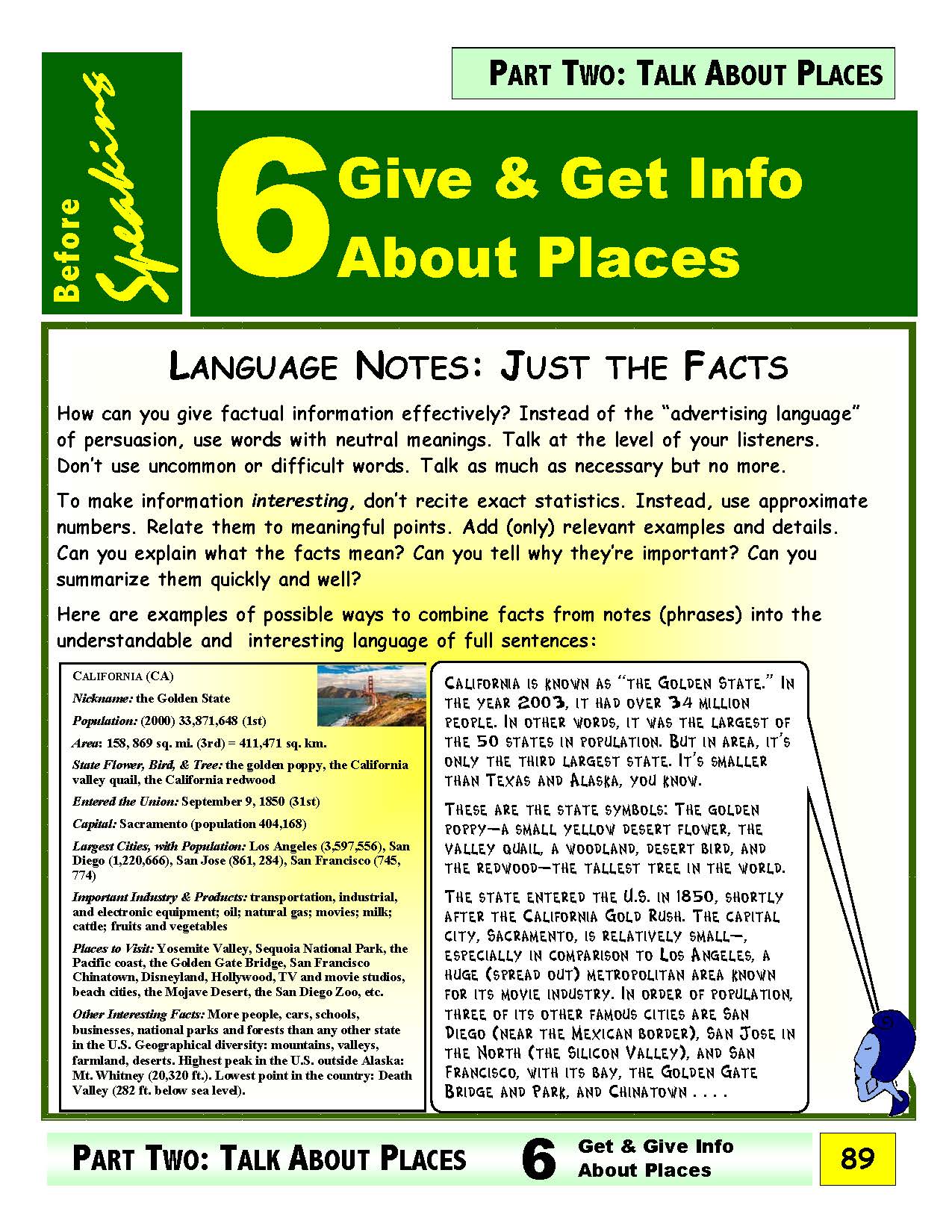1
/
of
8
Work/Life English
E-02.12 Get & Give Info About Places in the Real World
E-02.12 Get & Give Info About Places in the Real World
Regular price
$9.00 USD
Regular price
Sale price
$9.00 USD
Unit price
/
per
Before Speaking: Activities for Practice & Preparation in Oral Language Skills. Part Two, Talk About Places: 6: Give & Get Factual Information, pages 89-110 + 24 Answer Key Pages with Suggested (Model) Contributions to “Expert Game” Activities & Group Presentations
22 + 24 (46) pages
Who It’s For: Language-Arts Teachers, Learners, & Helpers Continuing to “Talk About Places” by Requesting & Giving Info About States, Countries, & More (With Effective Sentence Rhythm & Stress Patterns)
Why It’s Useful: The culmination of “Talk About Places” is likely to involve detailed info about landmarks, towns, cities, boundaries, nations, and more—including their names, locations in the world, populations, areas, languages, economics, etc. This Part Two-6 Download launches learning with informational U.S. States Learning Cards. It continues with Note-Taking in Grids, Figures & Facts about World Nations, Question & Answer Games about well-known world attractions and sites, and Visitor Information about places to visit. After Summary Vocabulary Lists, it ends with “Mini-Speeches” that are presentations of Travel Plans. Samples of these are among the suggested language compiled onto 24 pages from the Before Speaking Answer Key for Text Activities.
What You’ll Do:
[1] After perusing Language Notes titled “Just the Facts,” Give & Get Info from Notes in Section 6.A. As you gain “expertise” in what there is to know and share about one of the U.S. states, you get to “teach” it with “Clarity & Understanding.” In 6.B, you can Get & Give Info (about Countries) from Charts,” organizing it (cooperatively) to answer questions and to fill in world maps. Use these techniques to collect and distribute info about other places in the world that interest you.
[2] In 6.C, Get & Give Info with Questions & Answers (About Monuments & Famous Sites). In 6.D, after Understanding Persuasive Language about four U.S. tourist attractions, you can again play the “Expert Game” by sharing factual description with others.
[3] Finally, collaborate in small groups to research potential travel destinations: decide on a (nearby) place to visit; gather maps, facts, data, & advertising; find out about requirements, transportation, distances, routes, accommodations, prices, weather, attractions, and so on. Organize your presentation. (When practicing & polishing, you can consult suggestions in the attached Answer Key.) In turn, “perform” for the class. Listen to, view, and take in other group’s presentations.
[4] Whew. . . . After all that work, you deserve a vacation! Where would you like to go?
Couldn't load pickup availability
















